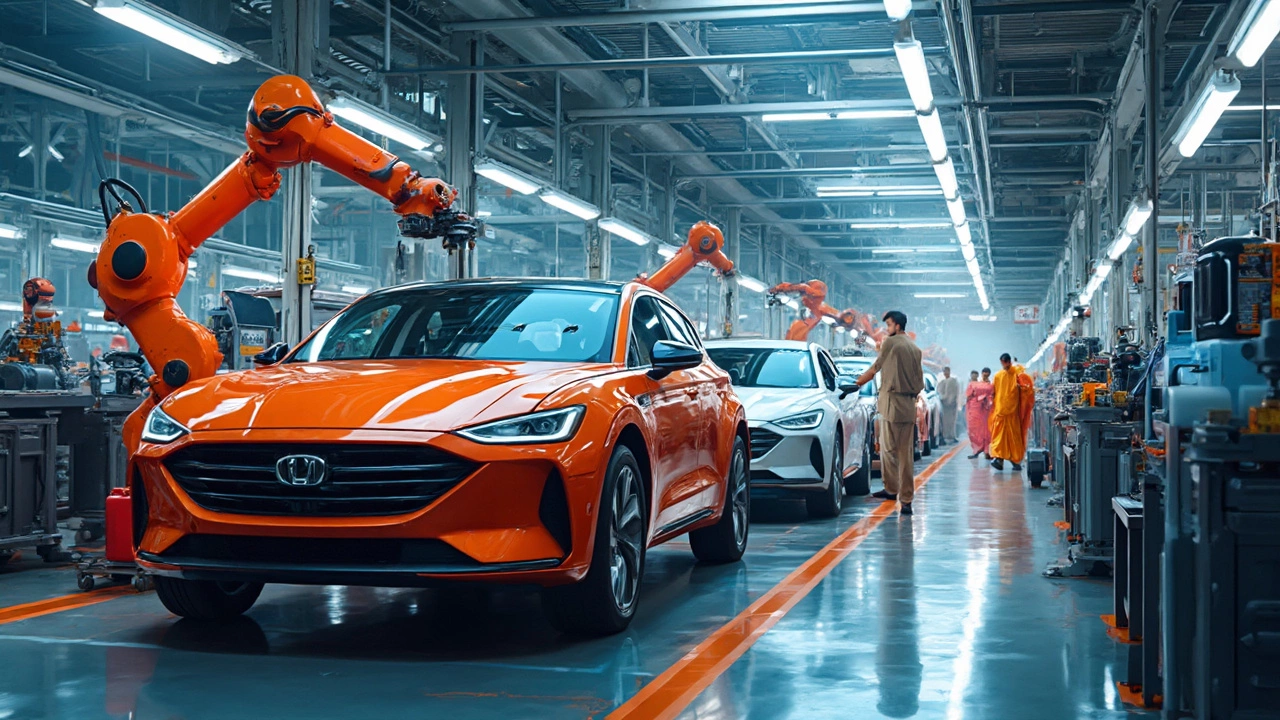Automobile Manufacturing in India: What’s Happening Right Now
If you’re curious about where the next wave of cars will roll out, India should be at the top of your list. The country has moved from a small‑scale producer to a global hub in just a few decades. Today, more than 30 manufacturers run plants across the nation, churning out everything from budget hatchbacks to luxury SUVs. This surge isn’t random – it’s backed by low labor costs, a huge home market, and strong government push.
What does this mean for you? Whether you’re a supplier, a job seeker, or just a car fan, the landscape offers clear entry points. Below we break down the main reasons behind India’s auto boom and the hurdles the industry faces.
Why India Is a Hotspot for Auto Production
First, the domestic demand is massive. Over 20 million new vehicles are sold each year, and that number keeps climbing as incomes rise and urbanisation spreads. Manufacturers love this because they can test new models locally before exporting them.
Second, the cost advantage is hard to beat. Skilled workers earn a fraction of what their counterparts make in Europe or the US, yet the quality of assembly has improved dramatically thanks to modern training programs and automation.
Third, the government’s “Make in India” campaign has rolled out tax breaks, relaxed land rules, and quicker clearance for foreign investment. Companies like Toyota, Hyundai, and Tesla have set up or expanded plants, citing these incentives as a key reason.
Lastly, the supply chain is getting tighter. Tier‑1 and Tier‑2 vendors are clustering around major hubs such as Pune, Chennai, and Gurgaon. This proximity cuts transport time, reduces inventory costs, and speeds up the rollout of new models.
Challenges & How the Industry Is Adapting
Even with all the positives, there are real challenges. The shift to BS6 emission standards forced factories to upgrade equipment and retrain staff, a costly move for smaller players. To cope, many have formed joint ventures or shared testing facilities to split the expense.
Infrastructure is another pain point. Congested roads and unreliable power can delay production schedules. In response, manufacturers are investing in on‑site solar farms and backup generators, aiming for a more self‑sufficient operation.
Skilled labor shortages are creeping up as the workforce moves towards service‑sector jobs. Companies are tackling this by partnering with technical institutes and offering apprenticeship programs that pay while you learn.
Finally, the push for electric vehicles (EVs) is reshaping the whole ecosystem. Battery packs, electric drivetrains, and new safety standards require fresh tooling and design expertise. Major players are already building dedicated EV lines, and the government is rolling out subsidies for both manufacturers and buyers.
All these factors create a dynamic environment where opportunities appear fast. If you’re thinking about entering the market, focus on niches like component manufacturing, EV charging infrastructure, or data‑driven logistics – areas that complement the existing auto ecosystem.
Bottom line: automobile manufacturing in India isn’t just growing; it’s evolving. Understanding the demand drivers, cost benefits, and emerging challenges will help you make smarter decisions, whether you’re looking to partner, invest, or simply stay informed about the next car you’ll drive.

Richest Car Company in India: Who Tops the List?
India's car manufacturing industry has seen substantial growth, with several companies vying for the top position. This article explores which company is currently the richest, based on revenue and market share. We delve into interesting facts about these companies and examine what makes them stand out. Discover tips on why these car companies succeed and how they impact India's economy. You'll gain insights into the Indian automobile landscape and learn about what drives its leading players.

Buying a Car in the US and Bringing It to India: What You Need to Know
Wondering if you can buy a car in the US and bring it to India? This article covers the essentials—from understanding import regulations to assessing cost implications. Learn about compliance with Indian road safety standards and the documentation you'll need. Discover tips for a seamless process and insights into car re-registration requirements in India.

